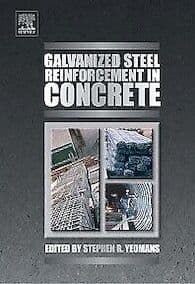
Curated with aloha by
Ted Mooney, P.E. RET

The authoritative public forum
for Metal Finishing 1989-2025

-----
Adding ammonium chloride in powder form to surface of hot-dip bath and it's effects on the environment and humans
for Engineers, Shops, Specifiers

avail from eBay, AbeBooks, or Amazon

avail from eBay, AbeBooks, or Amazon

avail from eBay, AbeBooks, or Amazon

avail from eBay, AbeBooks, or Amazon
avail from Amazon
"User's Guide to Hot Dip Galvanizing for Corrosion Protection in Atmospheric Service" by NACE (1997 only rarely avail.)
avail from AbeBooks, or Amazon
(as an Amazon Associate & eBay Partner, we earn from qualifying purchases)
Q. The title says it all. What effect does NH3 have on a hot dip bath; and the smoke produced, is it harmful to the environment and humans?
Paul Hardyprocess control technician. - Adeladie, South Australia
October 21, 2008
A. Sir:
Recently I had a hot dip galvanizing workshop and two Australian galvanizers attended. If I remember correctly they are using double salt flux (like much of Europe). They did have a kettle smoke exhaust system but did not have a bag house. In the USA the triple salt flux and quadraflux are much more common and used with kettle smoke exhaust AND a bag-house to collect and contain the smoke. Thus in Australia the use of ammonium chloride fines is common to complete the galvanizing job, whereas in North America the flux solution is rich in ammonium chloride. It is simply different ways to "skin the cat."
The NIOSH (CDC) Pocket Guide to Chemical Hazards lists ammonium chloride with an NIOSH limit of 10 mg/m3 and no OSHA limit with precautions to prevent skin and eye contact. Target organs are eyes, skin, and resp. sys.
The ammonium chloride does not damage the zinc, but may deplete the aluminum content of the zinc and produce excess dry ash.
I expect in time bag houses will become more common in Australia.
Regards,
Galvanizing Consultant - Hot Springs, South Dakota, USA
Adding ammonium chloride to the surface of a zinc bath creates copious fumes. Depending on what happens to those fumes, the outcome can vary from pollution and nuisance value to humans, to no effect at all.
Where fume extraction is fitted and effective, and the downstream filtration is effective at the small particle sizes created, then the system catches the fume and its not a problem. Where not fitted, this fume is a nuisance to workers, and eventually lands on ground outside and adds ammonia where its usually not wanted.

Geoff Crowley
Crithwood Ltd.
Westfield, Scotland, UK

Q, A, or Comment on THIS thread -or- Start a NEW Thread
